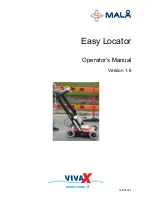
22
Radar signals travel in a straight line and do not pass
through earth. Consequently, police Radar aimed at
the crest of a steep hill cannot be received until you
are at or near the top. Warning time may be minimal
(as in situation #2) since a strong signal is not
present until you are near the crest of the hill.
At this point, you may be nearly in the police officer’s
line of sight. When cresting a hill, a weak initial alert
followed very quickly by a full alert is typical.
This alert pattern requires prompt attention.
4.
Moving Radar behind you,
traveling in the same direction
Police Radar signals transmitted from behind your
vehicle can be received when reflected by objects in
front of you such as large signs, bridges and trucks.
As you drive, the size and configuration of these
objects are constantly changing causing the strength
of any reflected Radar signal received to vary.
A strong, uninterrupted alert indicates the patrol car
is close behind.
Instant-On/Pulsed Radar
This type of signal appears suddenly when a Radar
unit is “triggered”. The instant-on alert consists of
an intense, three second audio “burst”, coupled with
the type of band detected and flashing of the signal
strength bar graph in the display.
Instant-on/pulsed alert to Ka band
K
Kaa
9
9
■ ■ ■ ■ ■
k









































